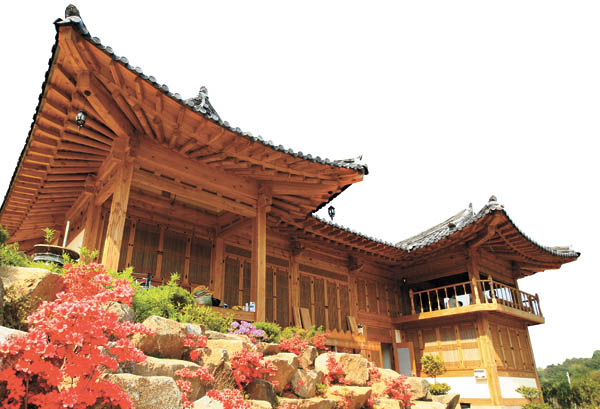
Eco-Friendly
Hanok is a very eco-friendly house. Before people started to build, they seriously considered the position and posture of Hanok. It is called geomancy and it is not just a superstition. In geomancy, the location of mountains, fields, and streams is very important. Usually, people choose to build a house facing south because it provided more warm sunlight. Furthermore, Hanok is built out of the materials from its environment. It is made out of the soil, wood, paper, and stone, which are directly gained from the nature. Stones are used when building the base of the house. Wood is used for the pillars, rafters, doors, windows, and flooring. Paper is made by naturally pulping the woods and they are glued to the wood ribs of windows and framing for sliding doors. Unlike modern houses, Hanoks with environmental materials give the feeling that people are very close to nature and seem to be better for inhabitantshealth since there are no allergery-provoking materials to worry about. Moreover, when looking at the shape and appearance of a Hanok, there are noticeably many curves. By just looking at these curves and the beautiful architectural design of a Hanok, it is said that people can ease their mind and be very calm.
Scientific Structure
People may think that a Hanok is primitive by reading the eco-friendly features of Hanok, but it also has very scientific and modern features. Korea has four seasons so it was important to build a house where people could stay cool in the summer and stay warm in the winter. Daecheong, which is a word for main floored room, helped to stay cool in the summer. It has a large space between the rooms. Its floor is made out of wood and it is separated from the earth so that air can pass under easily. Also, parts of its wall are always open or very easy to open. There is nothing special in this place but this place helps to keep the whole house stay cool by letting the air enter. In addition, Ondol helped people stay warm in the winter. The word ?ndol?is now registered in the Oxford dictionary and literally means, ?arming the stone.?It helps to heat the floor of the house. The fireplace of the kitchen is connected to the rooms. When people heat up the fireplace, the heat from the fire is transferred to the floor of other rooms. Then, the layer of stone in the floor gets heated. Eventually, the warm air at the floor level rises and makes the whole room temperature go up. This made Korean families gather at the warmest part of a floor of in the main room and thus formed the Ondol culture.
м Җмһ‘к¶Ңмһҗ © нҸ¬н•ӯкіөлҢҖмӢ л¬ё л¬ҙлӢЁм „мһ¬ л°Ҹ мһ¬л°°нҸ¬ кёҲм§Җ


